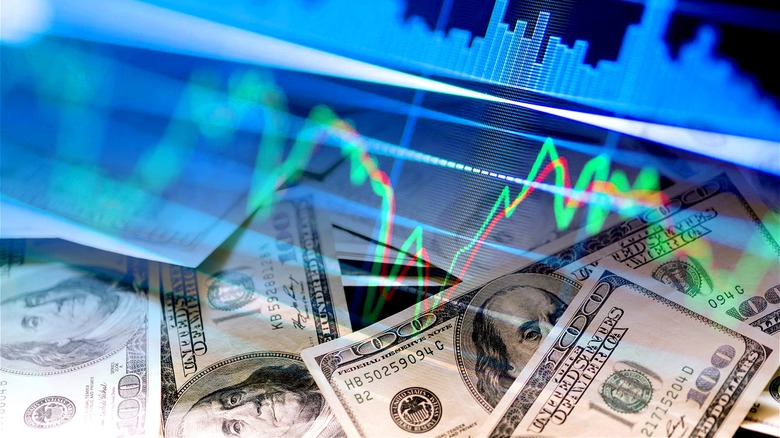Why You Should Be Paying Attention To Corporate Earnings (Even If You Don't Care)
Between inflation, student loan debt, and housing, it can be hard to financially keep up today in 2024. This can make paying attention to things like corporate earnings feel less important than ever (or even just flat-out frustrating). However, you might not realize that there's more to know about corporate earnings than simply the profit share of your least favorite corporation. Corporate earnings can actually serve as an economic indicator, helping analysts predict future economic growth and even employment levels (keep in mind corporations don't really value employee loyalty anymore). However, while this idea is great in theory, it should be taken with a large grain of salt in 2024.
On a larger scale, tracking the profitability of an individual corporation (or larger industry) can be important when it comes to the idea of something being "too big to fail." Most people likely became familiar with this term during the 2007-08 financial crisis, when the federal government intervened to stop several financial institutions from failing. Similarly, airlines faced a too-big-to-fail scenario and were bailed out in 2020 due to the COVID-19 pandemic. The idea is that the collapse of certain individual businesses or sectors could cause catastrophic damage to the country's economy, and therefore should be "bailed out" of negative financial predicaments for the betterment of all.
Not everyone agrees corporations should have a taxpayer-funded escape route from poor business decisions. However, in this way, tracking corporate earnings can be a good indicator of potentially larger economic problems to come.
Why corporate earnings are important
According to the Bureau of Economic Analysis, one of the many groups that monitor corporate earnings, corporate profits are an important way to track both the national income as well as a way to create up-to-date statistics on United States economic activity. As an economic indicator, corporate profitability can help measure corporate financial health, which, in turn, serves as an indicator for overall economic performance through the tracking of gross domestic product or GDP (similarly, GDP can be an important red flag indicator of a recession).
Since profits tend to fund things like capital investments, this indicator can also be used to project potential productivity or corporate capacity going forward. Similarly, corporate profits can be used to evaluate the effectiveness (or even just the general effect) of certain policy changes that might have been enacted or rolled back.
Note there's quite a delay in corporate-earnings reporting (generally speaking, finalized data isn't available for one quarter until the end of the next). This means corporate earnings data is more of a trend indicator as opposed to immediately actionable data. With that in mind, these trends can be important in understanding not just the growth rate of GDP, but also potential inflation trends, and even unemployment rates and/or the potential for future layoffs. While some might argue corporate profitability is also a way to track consumer attitudes and economic health, this is increasingly untrue.
The problem with corporate profits
While, in theory, corporate profitability should be an indicator of general economic prosperity, in 2024, this is far from the truth. In fact, going back to 2014, the Harvard Business Review found just 0.1% of income recipients actually reaped the gains of corporate income, thanks to the prevalence of stock buybacks. In the 10 years since, things have only gotten worse. In 2021, the Federal Reserve Bank of Kansas City found that nearly 60% of the inflation that spiked that year was due to corporate profits. Not only are corporate profits no longer an indicator of economic health, but in many cases, they can be the harbinger of a much worse economic situation for both workers and consumers.
Post-pandemic, corporate profitability has been at odds with the economic outlook of the country. Even as inflation and interest rates have kept many in the U.S. struggling, corporations have posted record profits. Both shrinkflation (see our guide on shrinkflation here) and greedflation (that is, the intentional increase in price to take advantage of inflationary economic situations) have been used to further squeeze consumers who are already financially struggling. Both these tactics have allowed corporations not only to pass on expenses to consumers but also make a profit while doing so.
Data from the Bureau of Economic Analysis shows that corporate profits shot up 22.6% during 2021, 9.8% in 2022, and 1.5% in 2023. Though there's been an obvious slowdown in profitability in the last year, while corporations have been making money, food prices for consumers have risen 25% since 2020.


